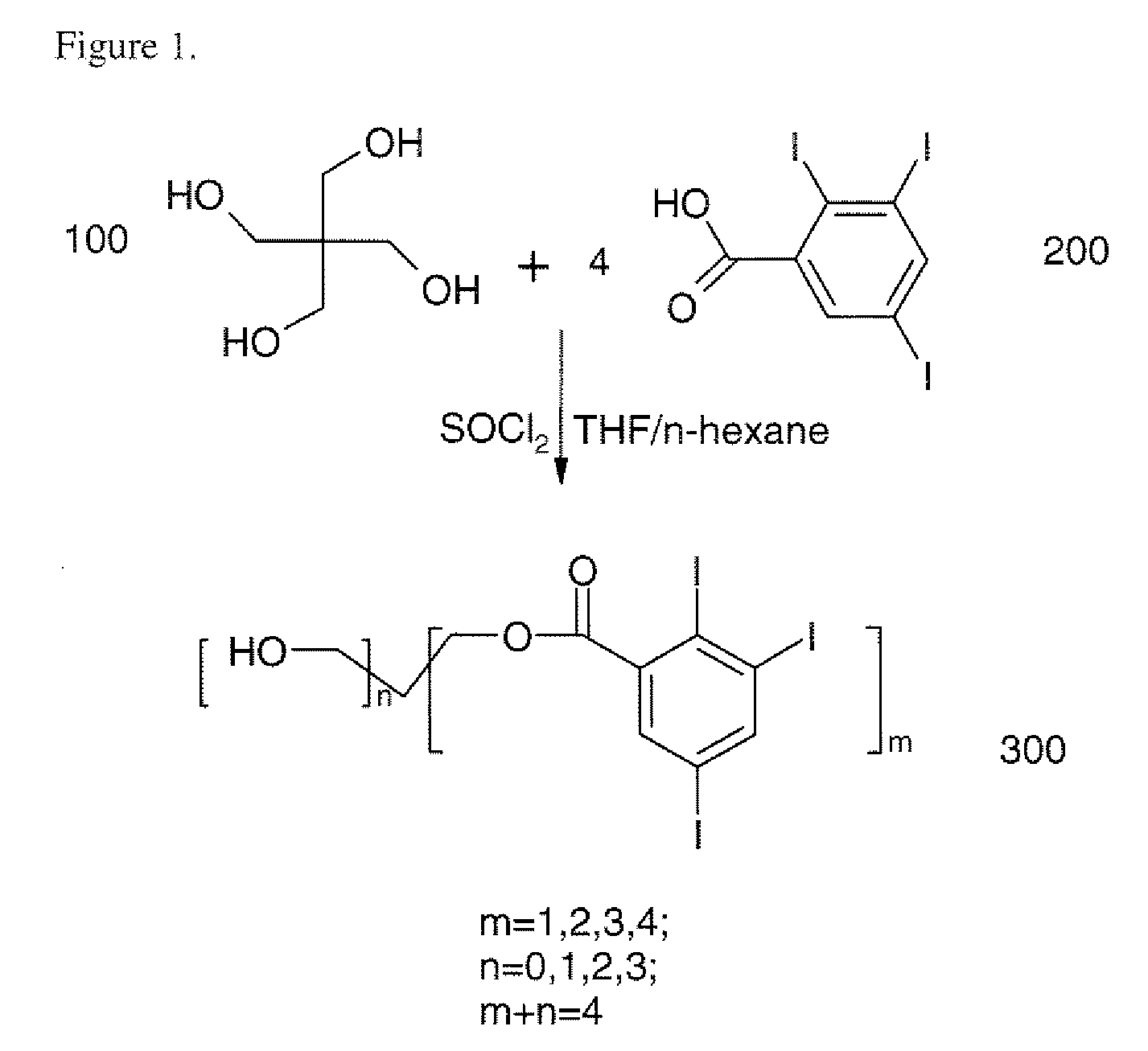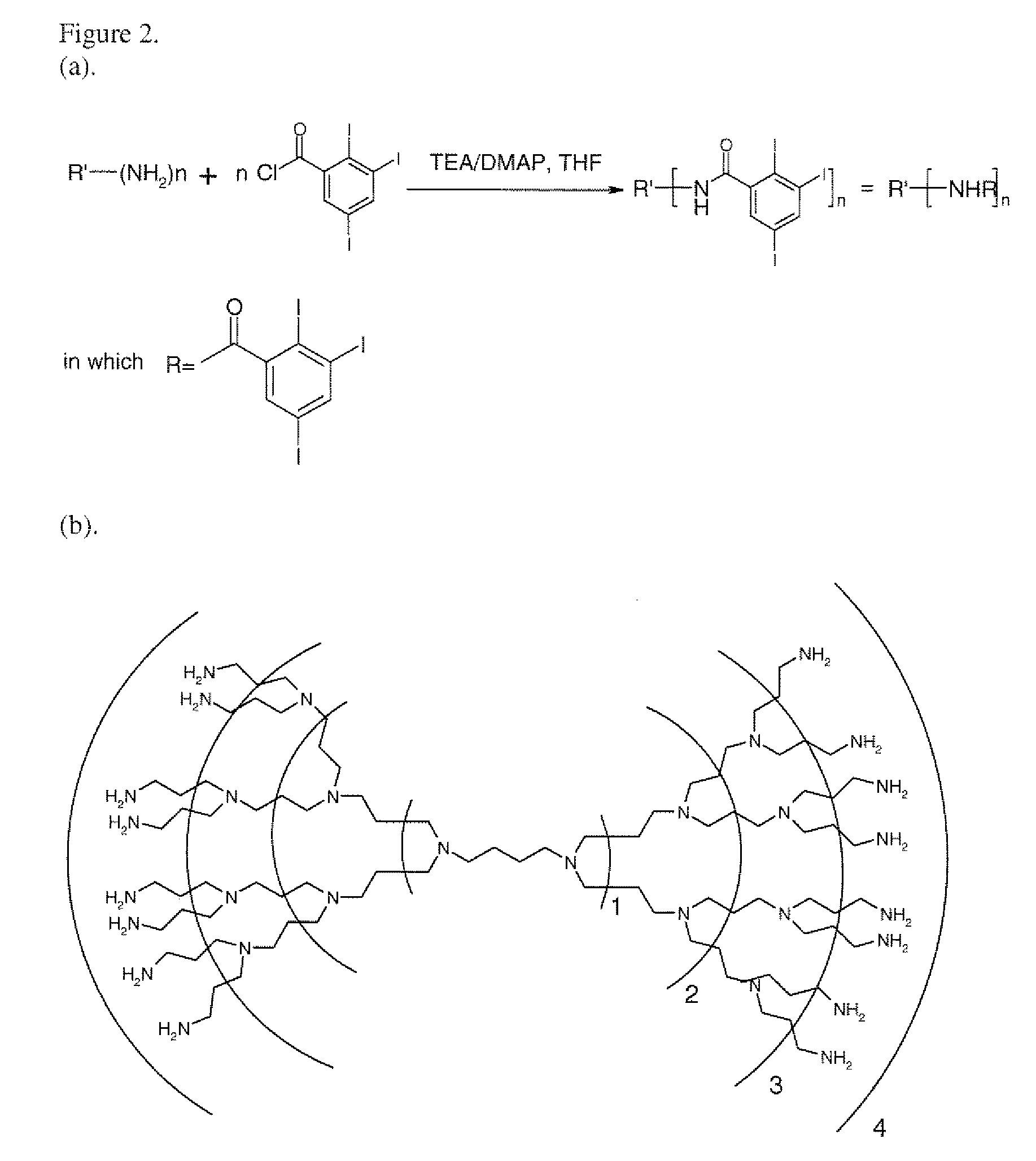Dendritic and star-shaped contrast agents for medical devices and bioabsorbable radiopaque bulk material and method for producing same
a bioabsorbable, bulk material technology, applied in the direction of organic active ingredients, organic chemistry, surgery, etc., can solve the problems of inability to use in some vessels, carotid arteries, and patients' injuries, so as to prevent the formation of thrombosis, promote the binding and/or adhesion of embolic materials, and increase the load of filtering portions
- Summary
- Abstract
- Description
- Claims
- Application Information
AI Technical Summary
Benefits of technology
Problems solved by technology
Method used
Image
Examples
Embodiment Construction
[0041]As shown in FIG. 1, when reacting pentaerythritol (100) with 2,3,5-triiodobenzoic acid (200) in the presence of SOCl2 (the catalyst) and THF / Hexane (the reaction medium), the resulting contrast agent (300) may have a high iodine content of 85%, almost twice as high as commercially available agents (50) such as those under the trade name Ultravist® as shown in FIG. 7. In the reaction scheme, the number of benzoic acid moiety is denoted by m which is an integer between 1 and 4, depending on the completeness of the reaction. The number of unreacted hydroxyl group in the final compound is denoted by n, which is an integer between 0 and 3, depending again on the completeness of the reaction. The sum of m and n, however, should always be 4 which corresponds to the number of hydroxyl groups in the starting pentaerythritol. FIG. 2A shows an exemplary coupling reaction between a polyamine-terminated dendrimer with 2,3,5-triiodobenzoic acid chloride to yield a corresponding dendritic io...
PUM
| Property | Measurement | Unit |
|---|---|---|
| particle size | aaaaa | aaaaa |
| radiopaque | aaaaa | aaaaa |
| radiopacity | aaaaa | aaaaa |
Abstract
Description
Claims
Application Information
 Login to View More
Login to View More - R&D
- Intellectual Property
- Life Sciences
- Materials
- Tech Scout
- Unparalleled Data Quality
- Higher Quality Content
- 60% Fewer Hallucinations
Browse by: Latest US Patents, China's latest patents, Technical Efficacy Thesaurus, Application Domain, Technology Topic, Popular Technical Reports.
© 2025 PatSnap. All rights reserved.Legal|Privacy policy|Modern Slavery Act Transparency Statement|Sitemap|About US| Contact US: help@patsnap.com



